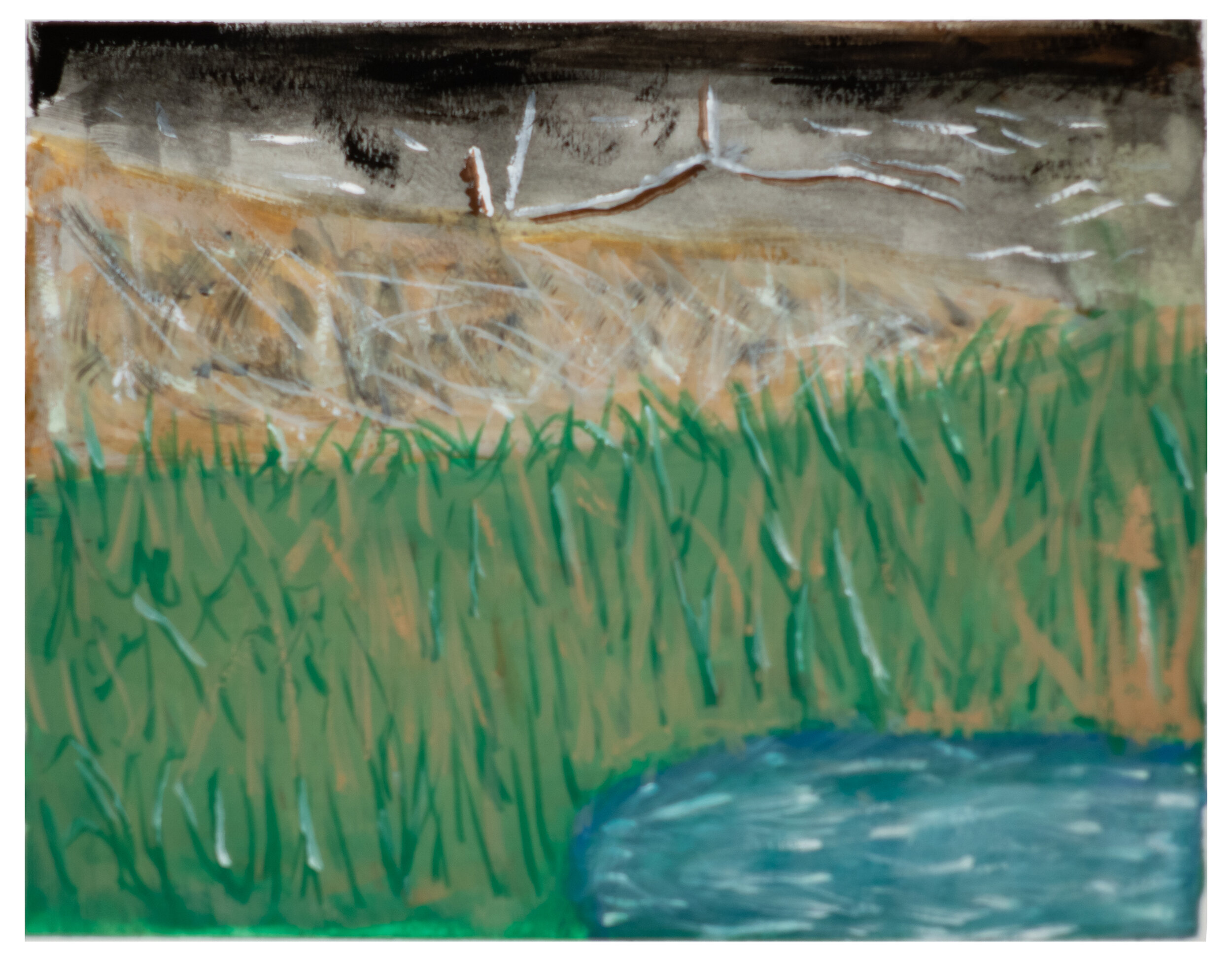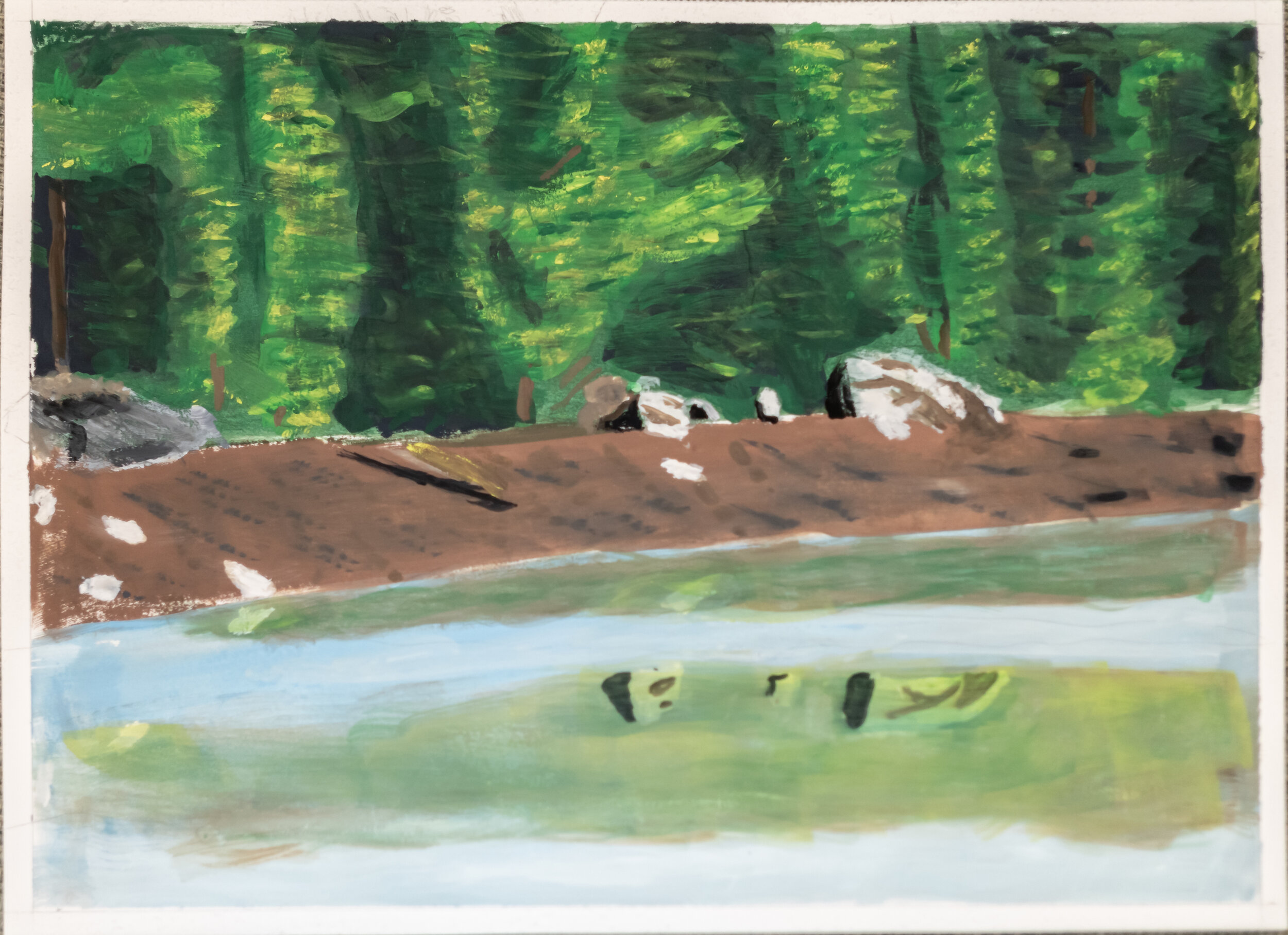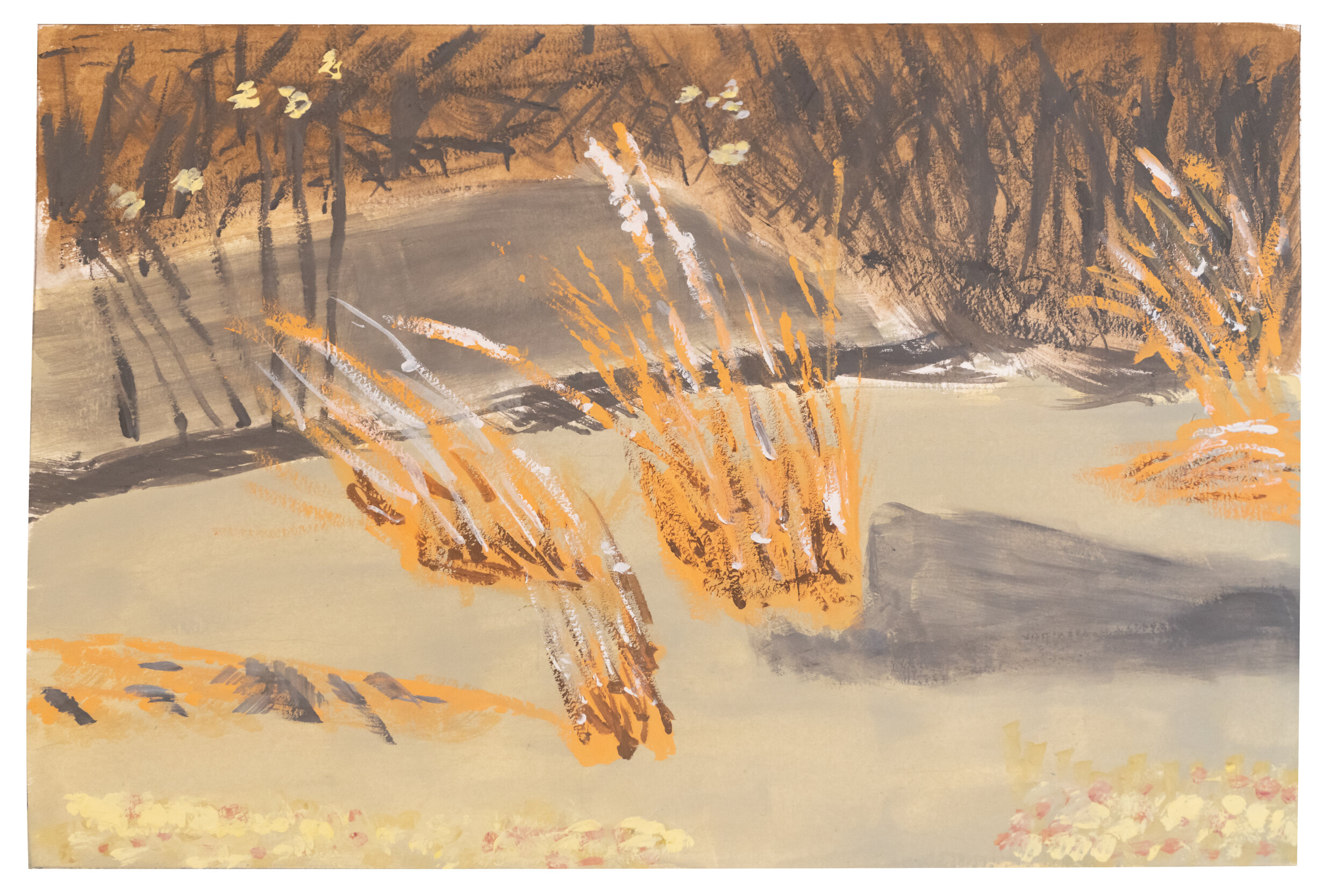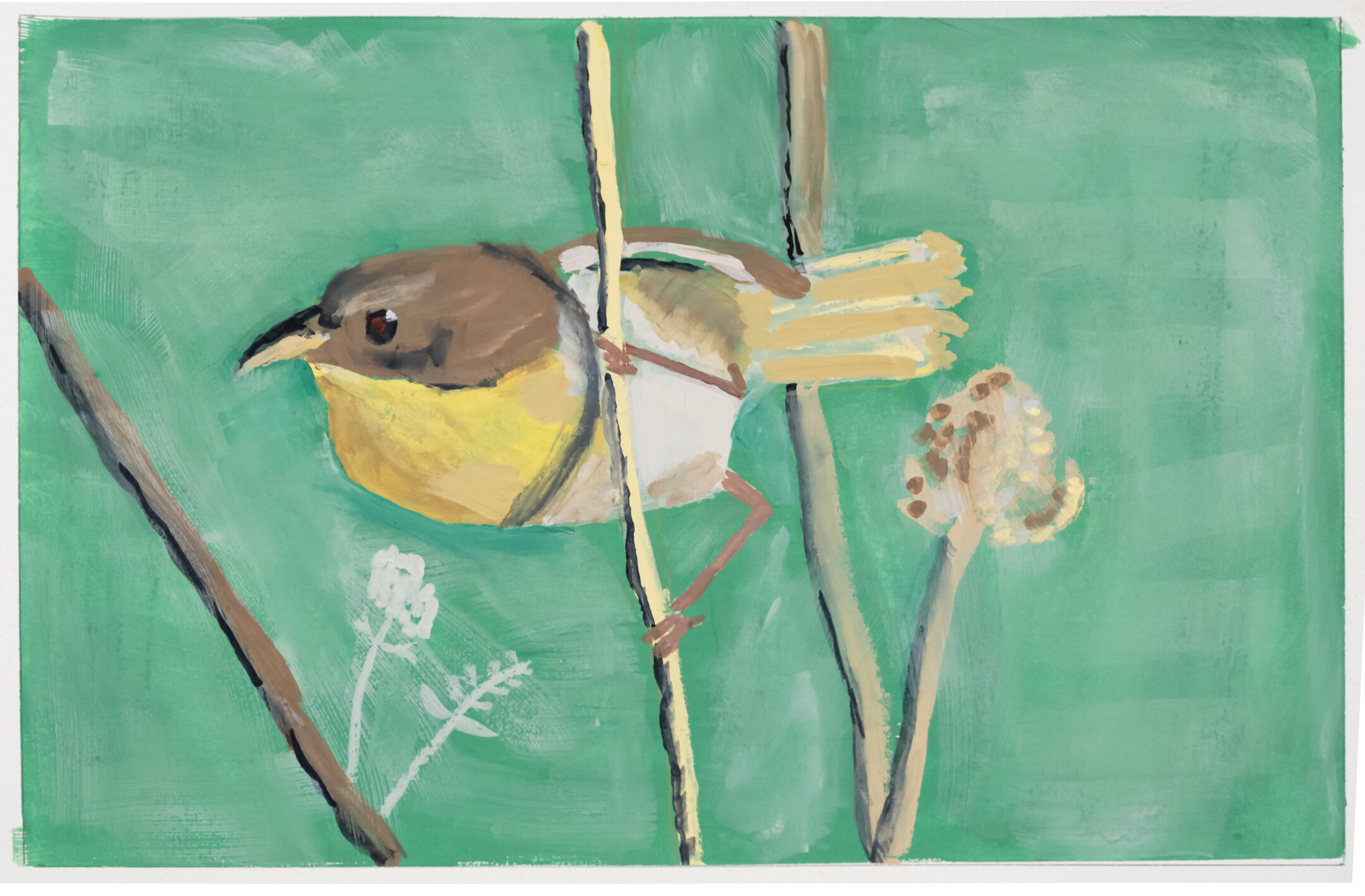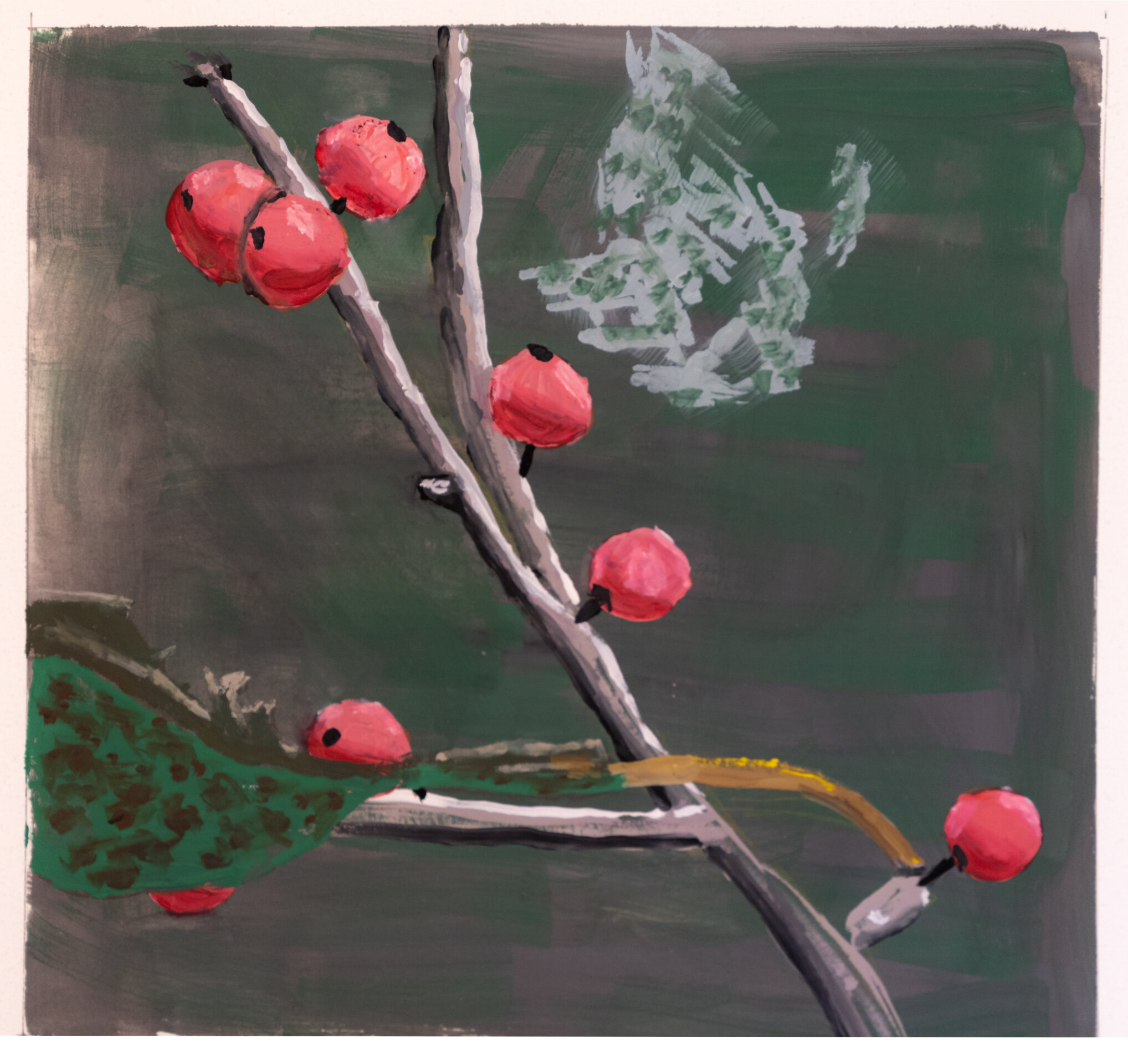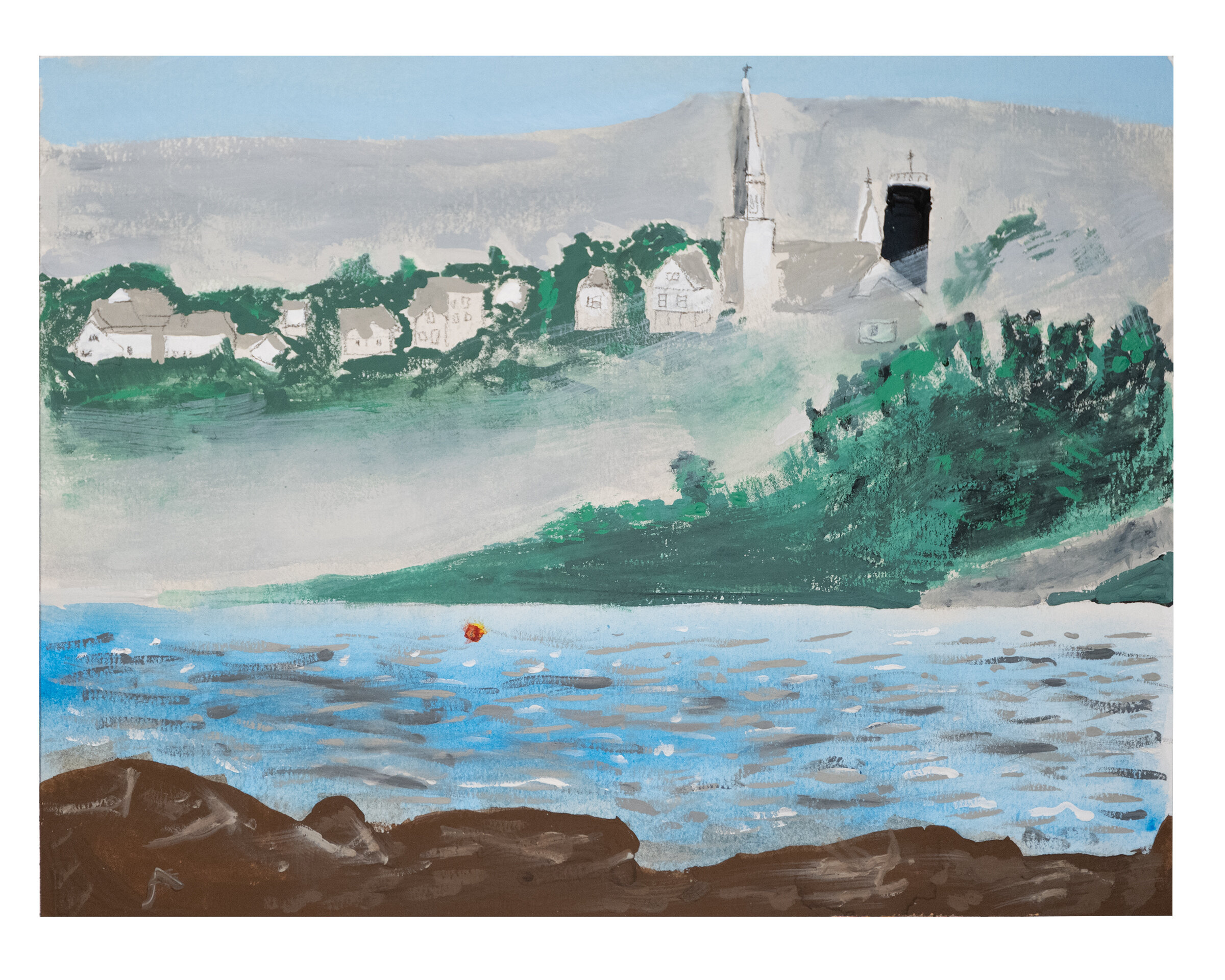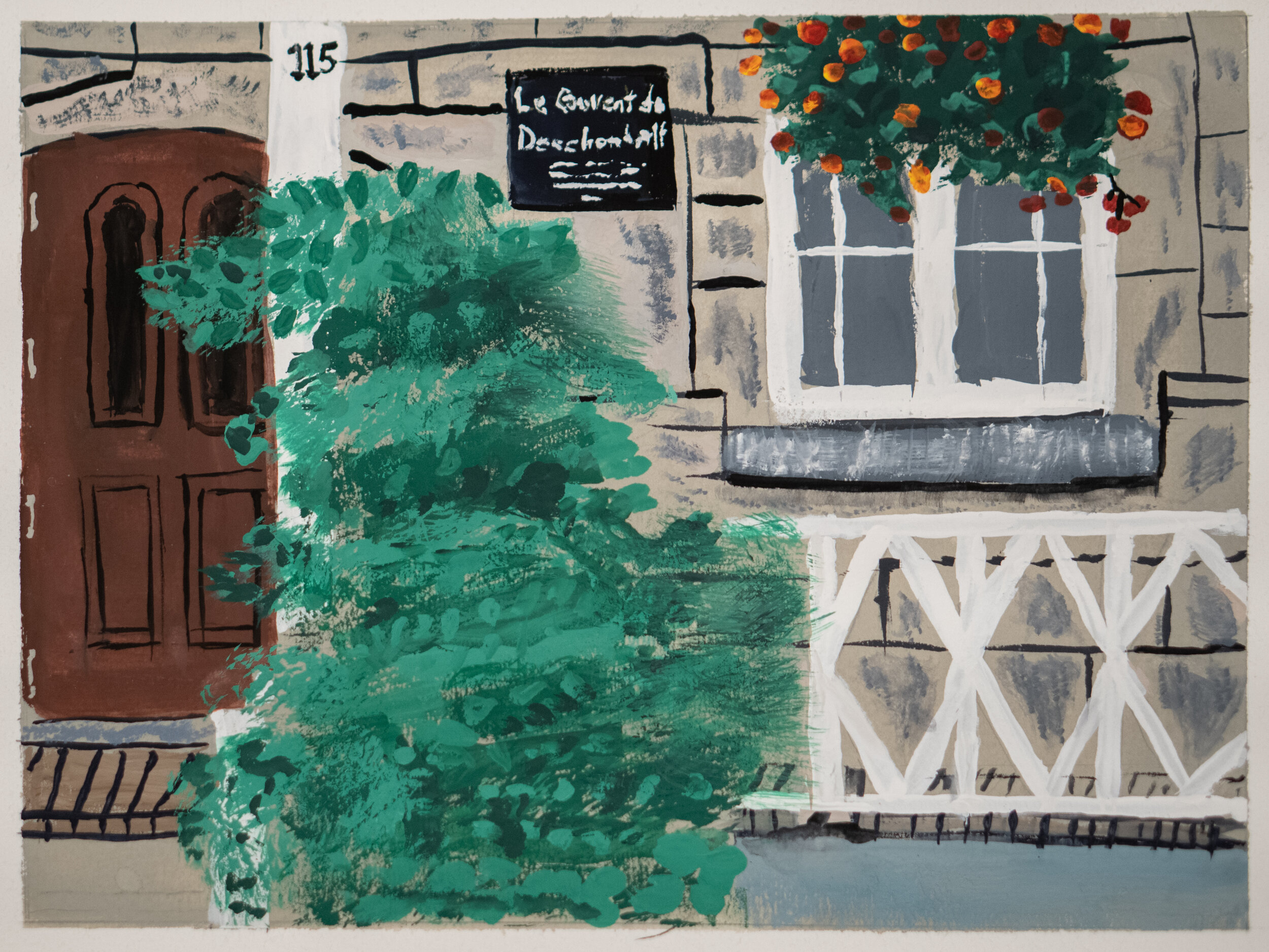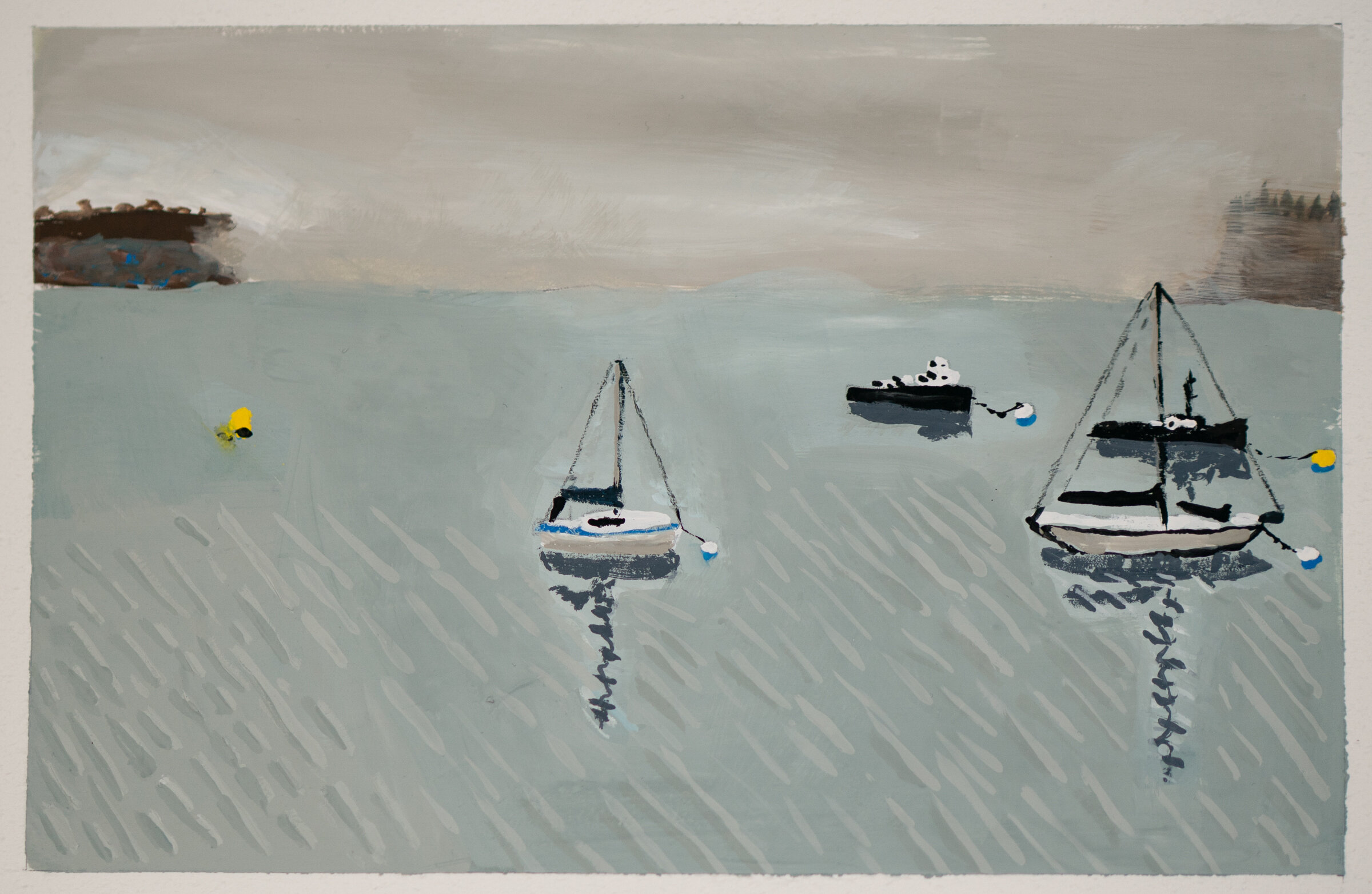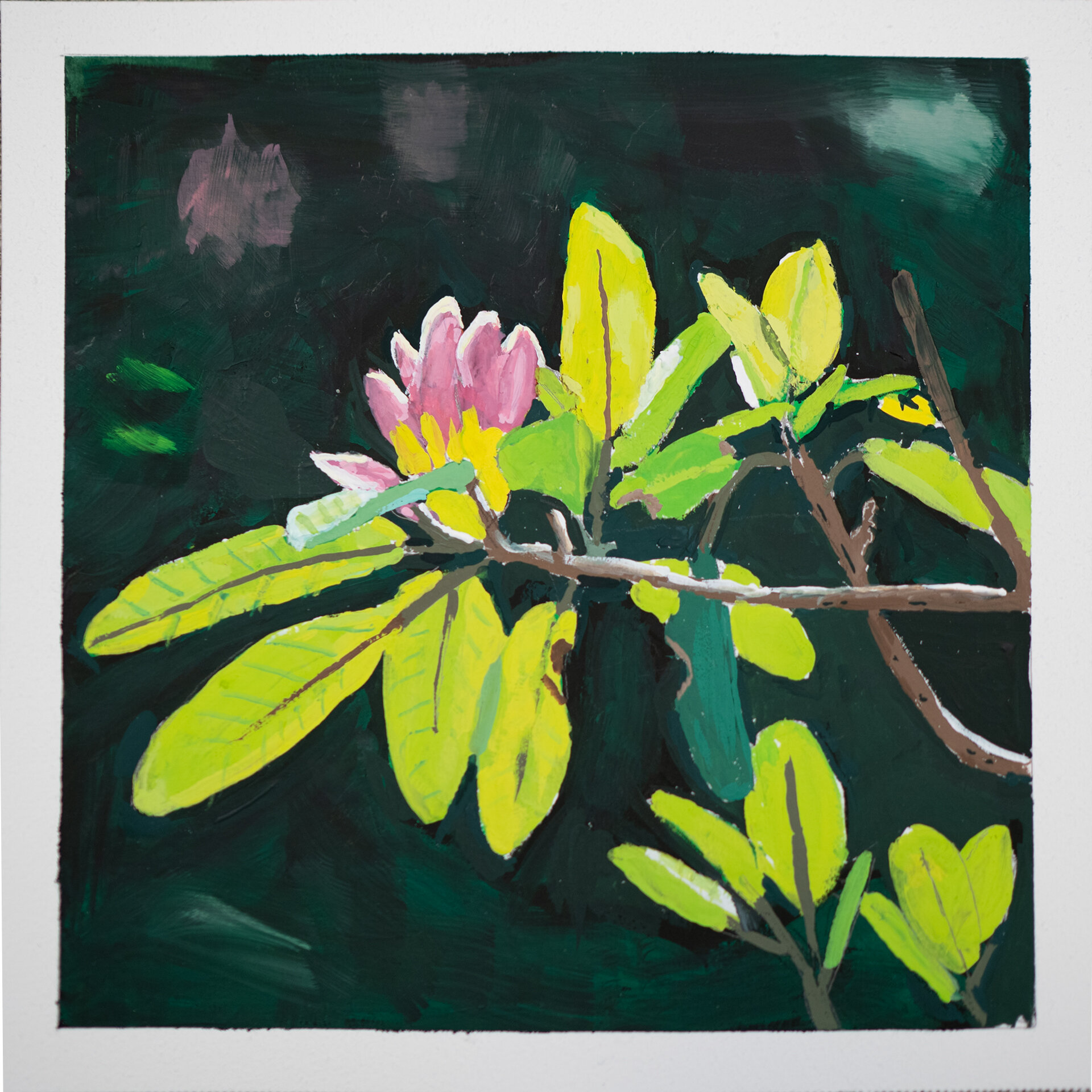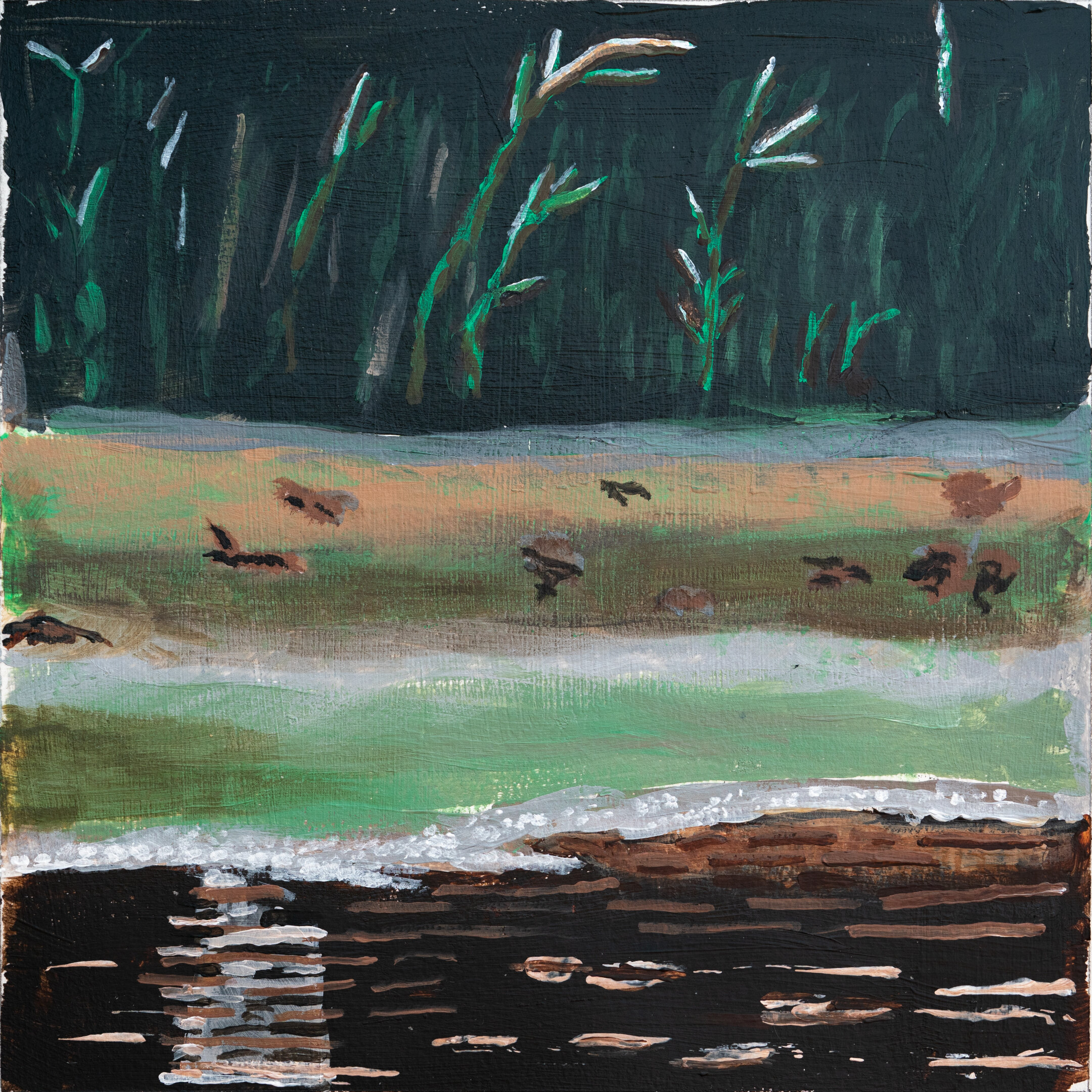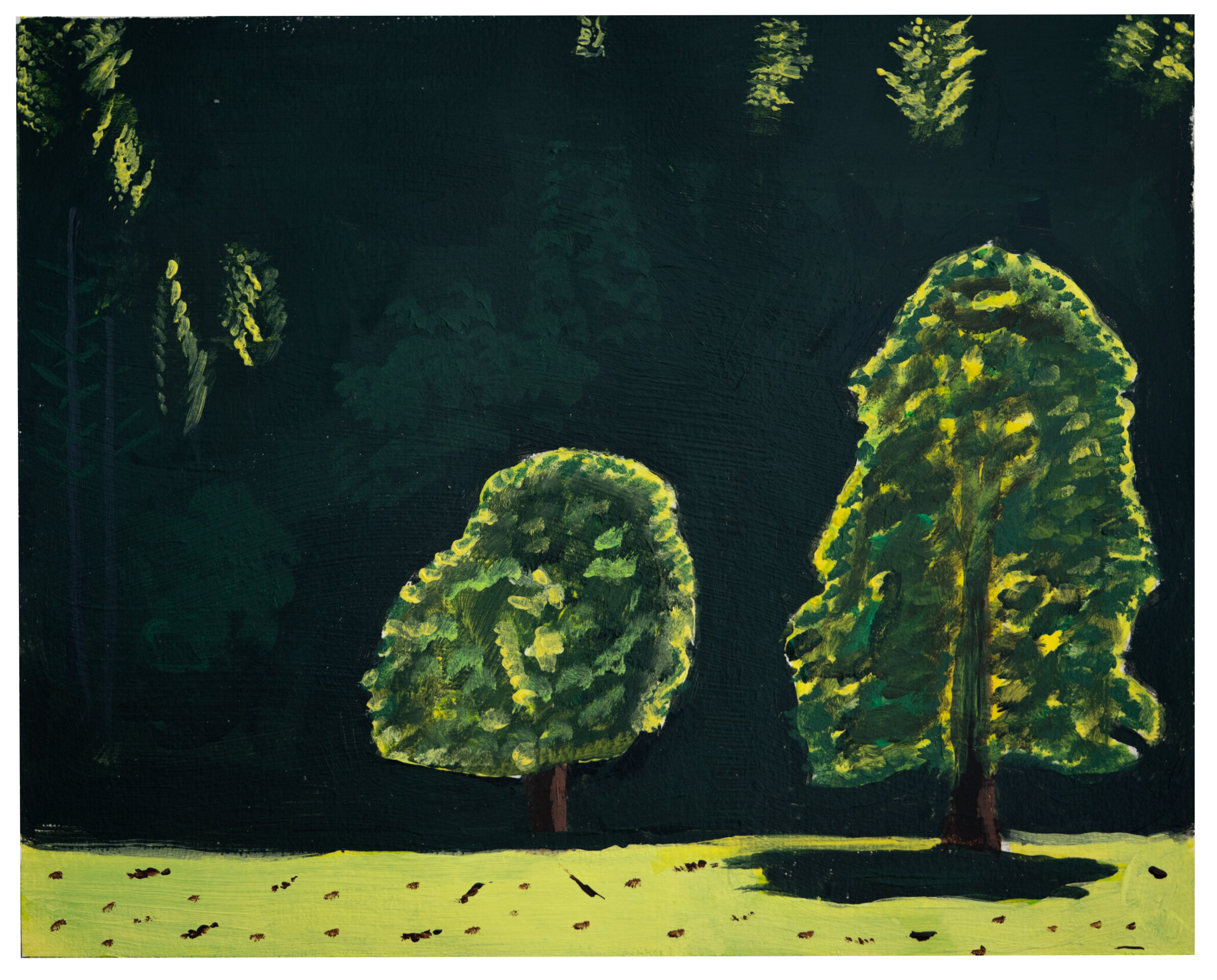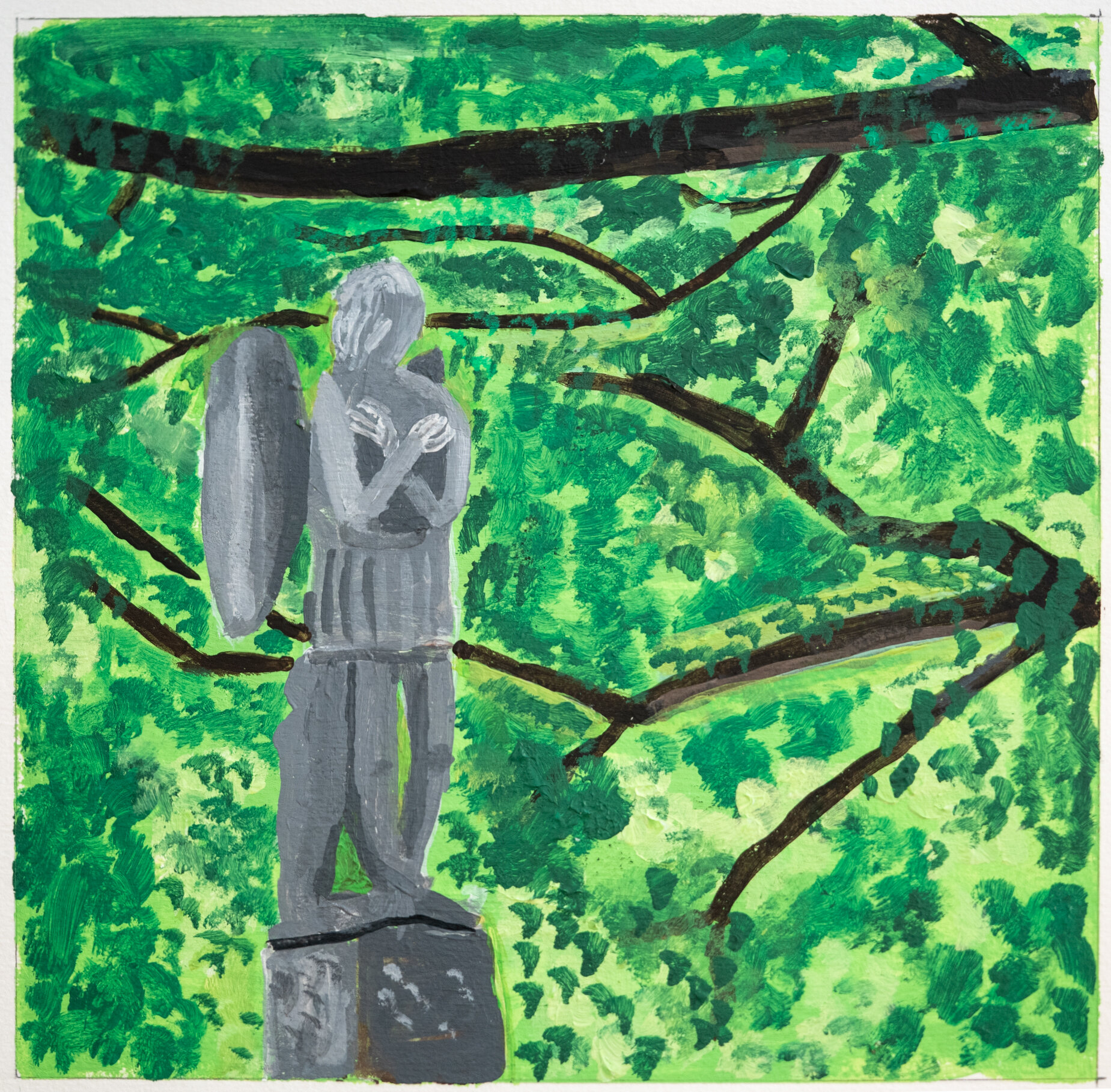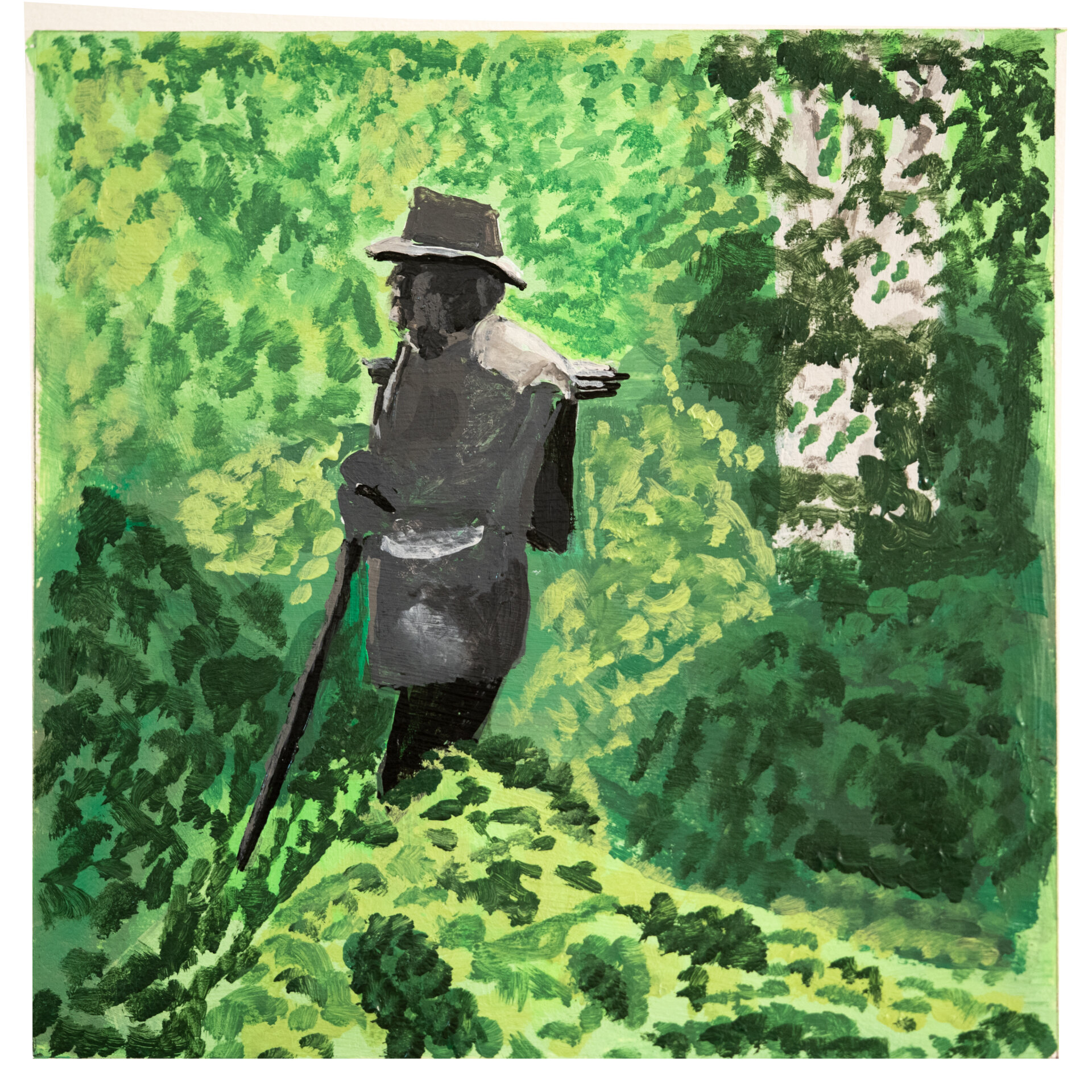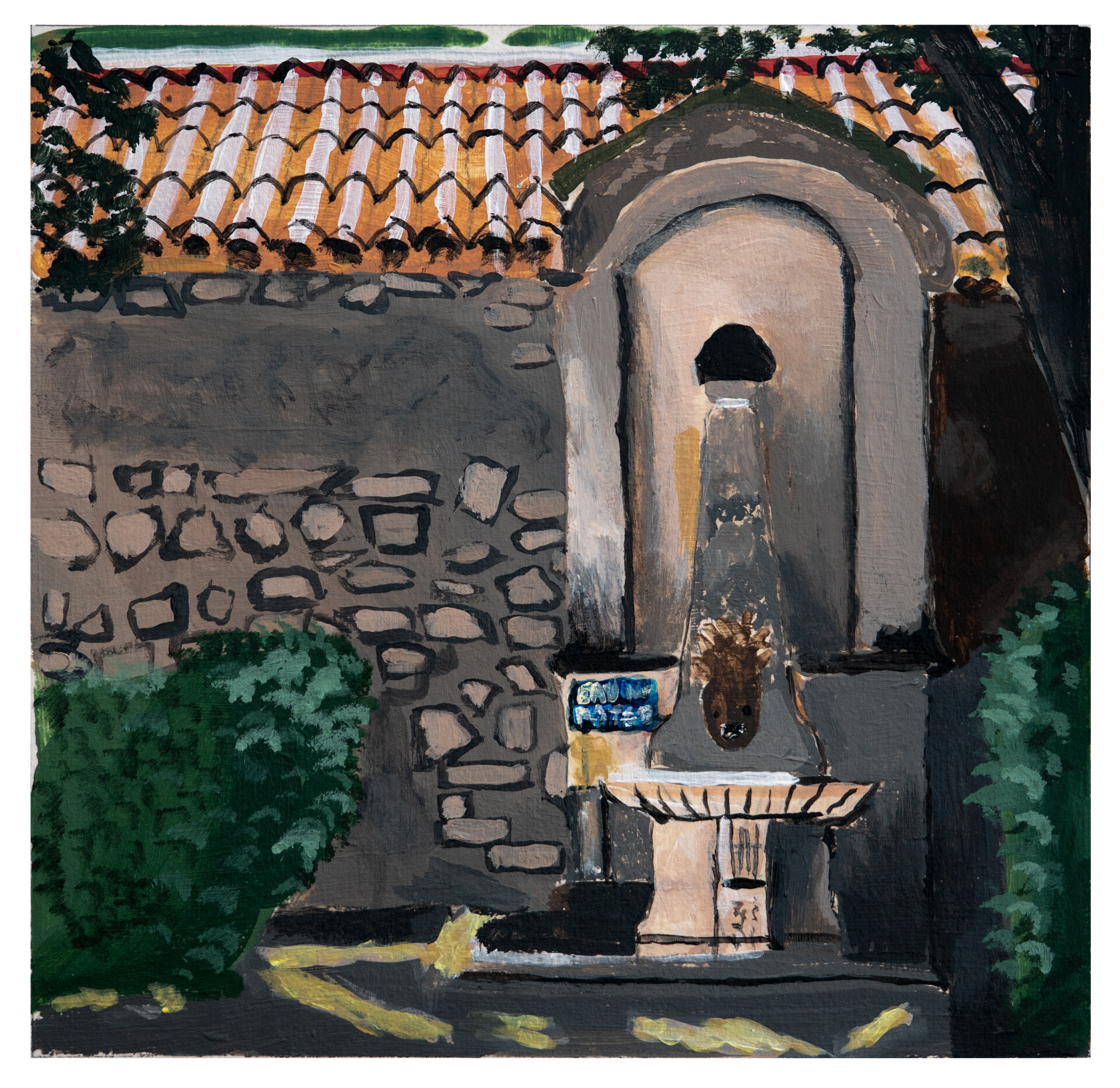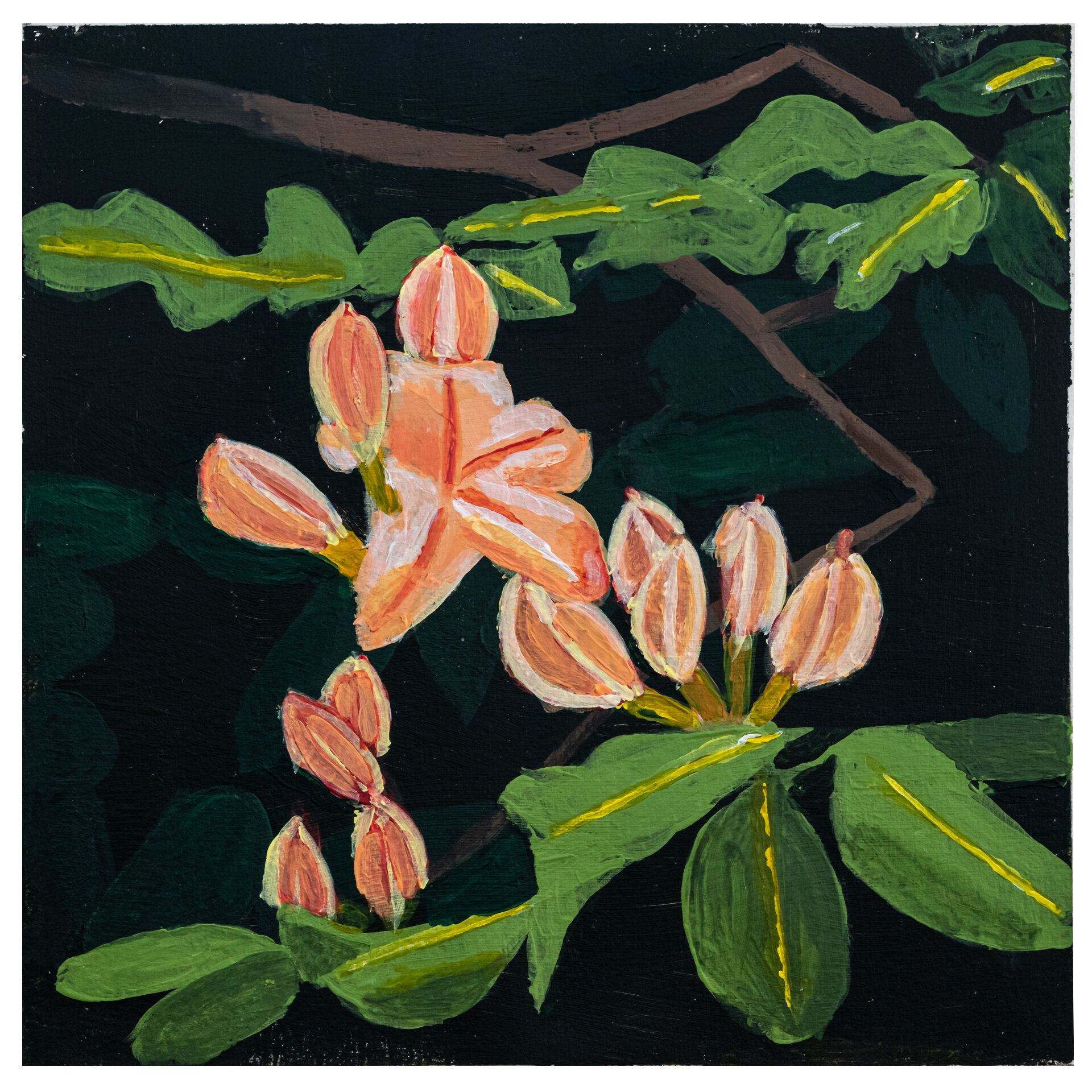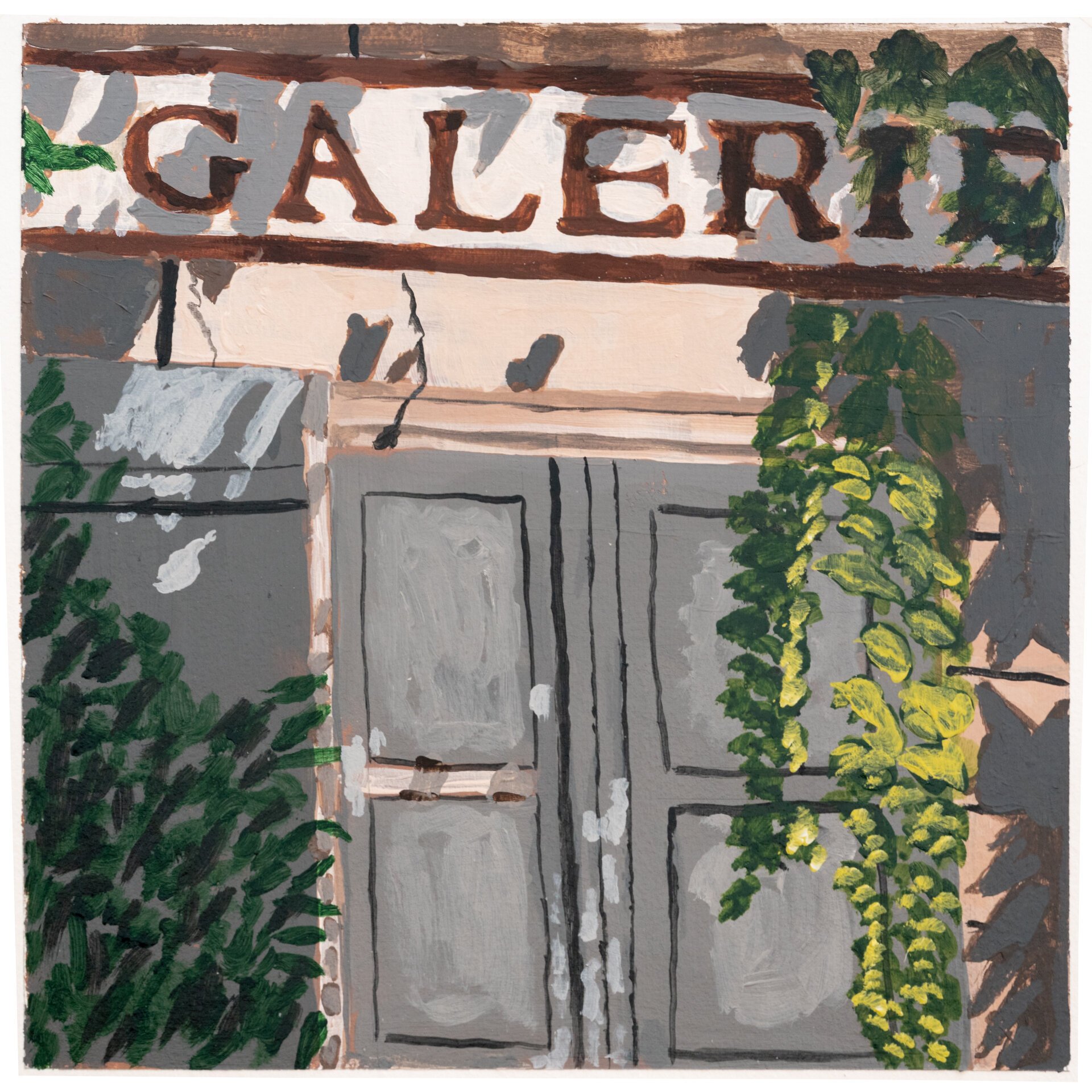Painting
Painting and photography are closely related, but each offers unique opportunities for expression. I am also interested in possible combinations of the two media, especially in composites or collages. It is not clear yet how to do this successfully. There are some attempts elsewhere on this website.
After examining the options, I chose gouache and acrylics as my two primary media. Oil paints involve organic and flammable solvents that didn’t seem appropriate for apartment living. Watercolor images can be quite compelling, but I have seen few that resembled the basic style I wanted to develop. I first started with gouache, in part because it is so versatile. It is water-based and can resemble watercolors when thinned. It has a matte surface which accepts new layers readily and can be drawn on with colored or ordinary pencils or crayons. Thinned out, it is semi-transparent. Used as a thick paste, it is opaque. It has two qualities that are both advantages and challenges. First, it dries quickly. Combined with its opacity, this allows images to be built up in layers as determined by the composition. In contrast, watercolor images must be built up from light colors to darker, independently of the layout of the image. The quick drying can be a challenge for a beginner, who must learn to work quickly and confidently. Second, applying a wet paint layer over a dry one will begin to reconstitute the lower layers. This makes it much easier to do blending, but again requires speed and confidence. Second, the opacity and matte consistency have obvious advantages and make it easier to paint fine details. However, these same qualities can make blending a challenge. The opacity also very quickly covers up any drawings or guidelines that might already be on the canvas.
Gouache provides a nice range of colors, but its matte finish means that the colors will dry to a different shade than when the paint is wet. This is a challenge for beginners, but most experienced gouache painters report that they have gotten used to it.
Acrylic paints are also water based but dry quickly to a rubbery plastic that cannot be reconstituted. Acrylics dry to a glossy surface, which gives greater vibrancy and range of color than gouache. Sometimes the slippery surface can make spreading new layers of paint a challenge. This can usually be fixed with a layer of gesso, but that is an extra step. The rapid and irreversible drying can make color and tonal blending quite a challenge. Again, skilled painters report that they have been able to adapt.
Shown below are galleries of gouache and acrylic paintings. Each is arranged in rough chronological order. As such, they represent mostly my learning path rather than being any kind of portfolio.

